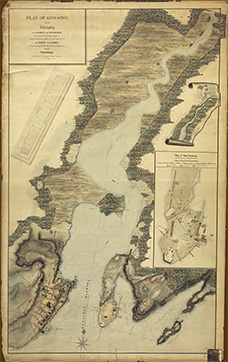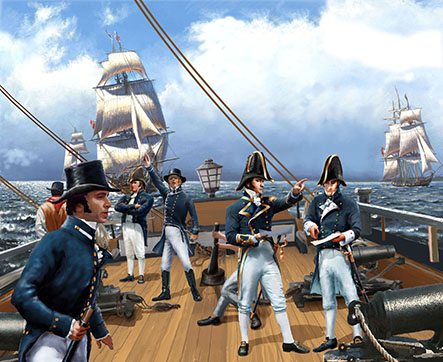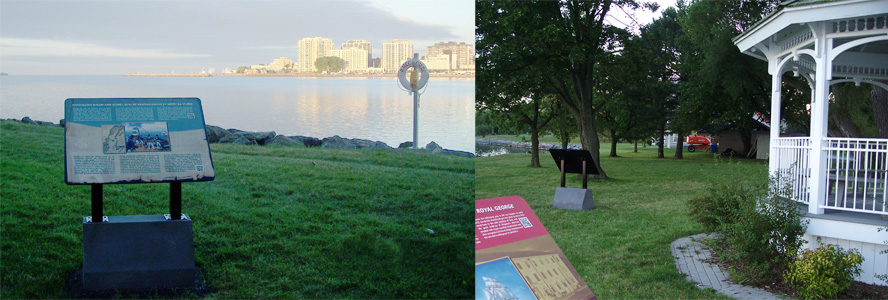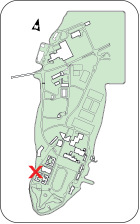During the war the Dockyard and associated establishments grew rapidly. At its height, there were over 1,600 ships' company, a Dockyard professional staff of nearly 130 supported by some 1,200 day labourers, and the naval hospital staff caring for unknown numbers of patients with special needs. Each group presented a significant challenge. In contrast to salt-water based ships, the Lakes' squadrons were able to secure fresh food and water from onshore communities, but these items had to be found and delivered.

Contemporary sketch map of the shores and measures in the vicinity of Kingston from a survey by Lieutenant H.L. Renny, RE, and soundings by Acting Lieutenant W. Bayfield, RN. Fortifications and buildings are illustrated on both Points Frederick and Henry. Inset illustrates the proposed alterations for the dockyard.

Painting: Provincial Marine of Canada, Officers, 1812-1813. On the quarterdeck of a British man-of-war (from the left) a midshipman, a surgeon, a sub-lieutenant, a captain, and a lieutenant, in uniform. Courtesy of the artist, Peter Rindlisbacher.
Local merchants brought in livestock and clothing, flour and tea, boots and soap from Europe, Montreal, and eastern British North America. There was even a clandestine trade for goods across the St Lawrence River where prices were often lower and many American merchants willing. In addition, the Dockyard was a trans-shipment point for establishments further west. All of these supplies came through the victualling wharf that faced Kingston and the lake where they were stored or loaded on the warships and commercial craft. Estimates are that in 1814 alone the Dockyard cost £47,327 (current value being many millions of Canadian dollars). This large flow of money changed significantly the nature of the Kingston settlement.
Walking Tour

 Panel 8 is located just to the south of panel 7 (on the water-side of the gazebo in front of 2 Point Frederick Drive) and is sited towards the Lake where the victualling wharf was located. The gazebo was a gift from the Class of 1966.
Panel 8 is located just to the south of panel 7 (on the water-side of the gazebo in front of 2 Point Frederick Drive) and is sited towards the Lake where the victualling wharf was located. The gazebo was a gift from the Class of 1966.